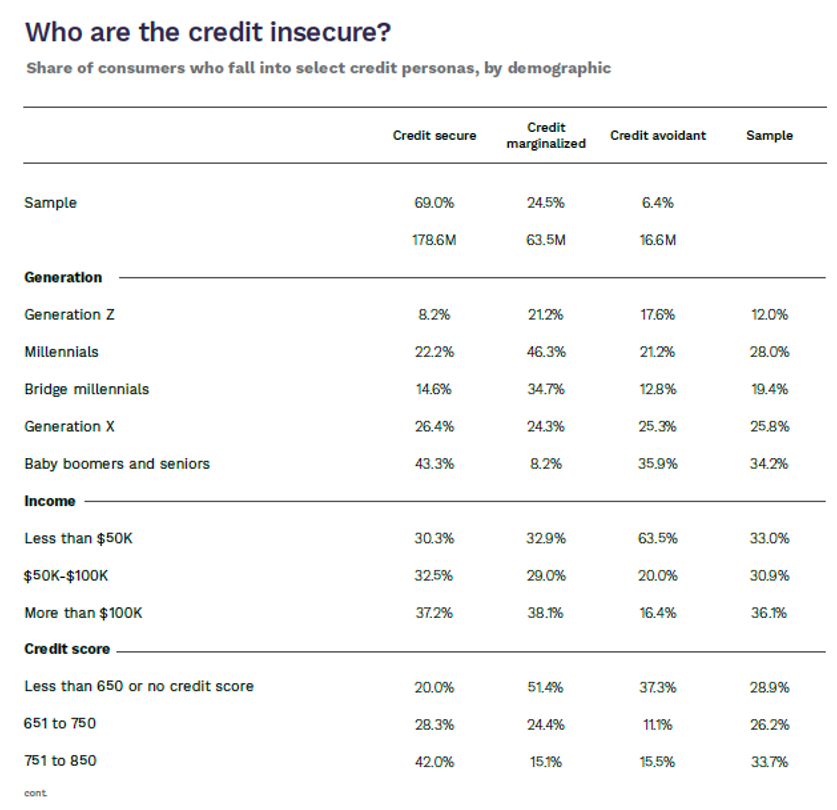More Men Than Women Have Been Denied Credit at Least Once in Past Year

In the United States where credit scores are a critical factor in determining whether you are approved or denied for a mortgage, auto loan or student loan, having good credit is not a nice-to-have — it’s a near necessity.
Despite the value credit offers, millions of consumers still lack access to this financial resource.
For “How Credit Insecurity Is Changing U.S. Consumers’ Borrowing Habits,” a PYMNTS and Sezzle collaboration, nearly 2,700 consumers examined nine distinct credit-related actions and identified how those actions contributed to boosting credit scores. Consumers were then grouped into three categories: credit secure, credit marginalized and credit avoidant.
Findings captured in the report showed that approximately 80 million consumers, or one-third of the population, have experienced some form of credit insecurity in the past year.

Among these credit insecure consumers, about 25% or an estimated 63.5 million are credit marginalized individuals who have been rejected for credit products at least once in the past year, likely driven by a change in their finance situation or a decline in their credit score. As a result, they are more likely to face difficulty qualifying for new credit products and resort to high-interest loans.
Credit marginalized consumers are also more likely to have overdue payments on payday loans and high-interest credit builder loans, further exacerbating their financial challenges.
They are less likely to apply for new credit products due to low credit scores and a fear of rejection. The lack of understanding of how to improve credit scores and qualify for credit products compounds the issue, with only a small percentage of consumers having a good understanding of credit-related actions.
The data also revealed that millennials make up nearly half of the credit marginalized group, at 46.3%. Bridge millennials — the cusp generation representing older millennials and the youngest members of Generation X, generally considered to have been born between 1980 and 1989 — come up next, making up about 35% of this cohort.
Baby boomers and seniors, on the other hand, make up less than 10% of this group, likely because of their experience managing fixed or lower incomes, as well as their reduced engagement in applying for credit.
In terms of gender, men account for 61% of the credit marginalized cohort, “possibly because men are still the primary domestic breadwinners and more likely to apply for credit,” the study found.

